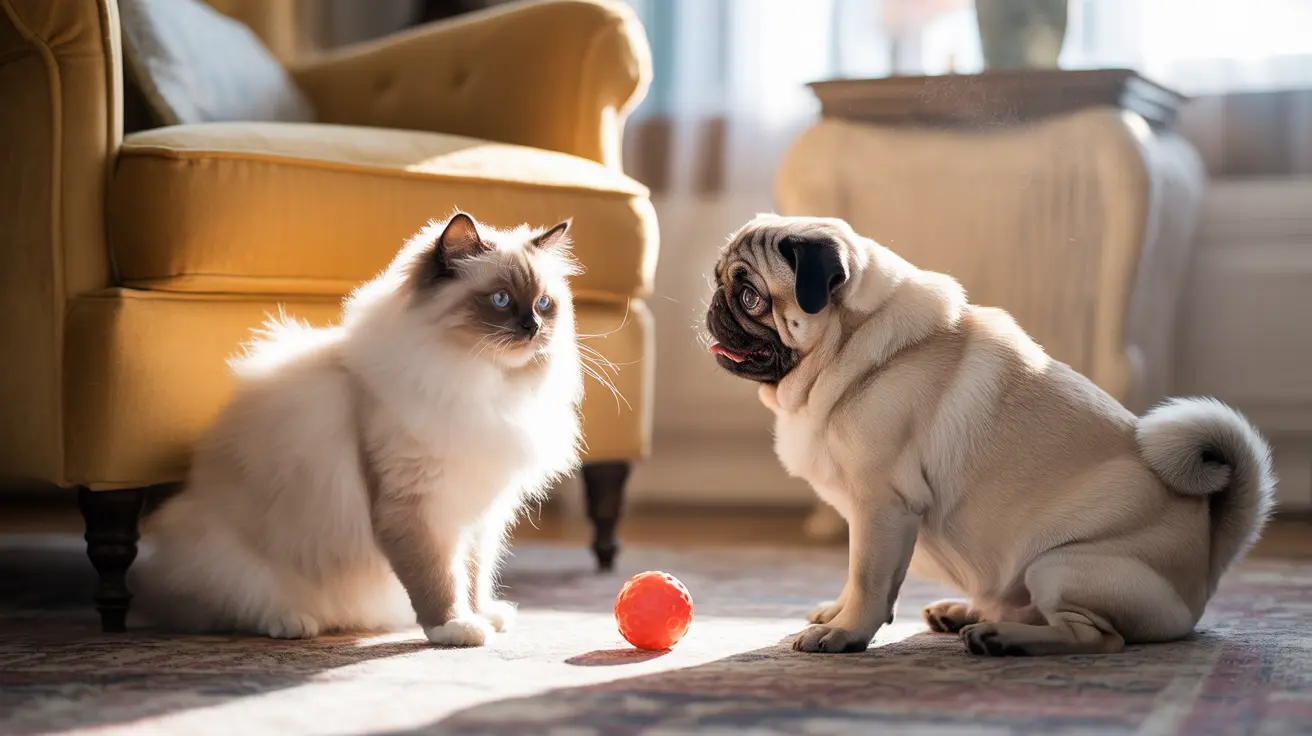The Truth Behind Cat and Dog Relationships
The age-old belief that cats and dogs are natural enemies is more myth than reality. While these beloved pets can sometimes clash, their conflicts stem from fundamental differences in communication, instincts, and social structures rather than inherent hatred. Understanding these differences is key to fostering harmony between our feline and canine companions.
Research shows that successful cat-dog relationships are not only possible but common in well-managed households. A recent study involving over 1,200 pet owners revealed that while initial conflicts may occur, proper introduction and training can lead to peaceful coexistence and even friendship between these species.
Understanding Natural Instincts
Dogs were domesticated thousands of years before cats, primarily as hunting companions. This heritage plays a crucial role in their interactions with cats. Dogs retain their instinct to chase smaller animals, while cats – being both predator and prey in the wild – are naturally defensive when confronted with larger, energetic animals.
These instinctual behaviors often create a cycle: a dog's excited approach triggers a cat's flight response, which in turn activates the dog's chase instinct. Understanding this dynamic is essential for pet owners looking to manage their pets' interactions effectively.
Communication Barriers Between Species
One of the primary sources of conflict between cats and dogs lies in their drastically different communication styles. What appears friendly in one species might signal aggression in the other. For example, a dog's wagging tail typically indicates excitement and friendliness, while a cat's tail movement often signals agitation or impending aggression.
Even vocal communications differ significantly. A dog's playful bark might be interpreted as threatening by a cat, while a cat's defensive hiss can confuse or provoke a dog. These misunderstandings often lead to unnecessary conflicts that could be avoided with proper management.
Creating Harmony in Multi-Pet Households
Successfully integrating cats and dogs requires patience, understanding, and proper management techniques. Essential steps include:
- Providing separate spaces for each pet
- Conducting controlled, gradual introductions
- Rewarding calm, non-aggressive behavior
- Ensuring equal attention and resources for both pets
- Creating escape routes and safe zones, especially for cats
Many pet owners find that early socialization significantly increases the chances of peaceful coexistence. Puppies and kittens raised together often develop strong bonds and learn to understand each other's communication styles naturally.
Breaking the Stereotype
Despite popular media portrayals, many cats and dogs form close friendships when given the chance. These relationships often develop through careful introduction and positive reinforcement. Success stories of cats and dogs sharing beds, grooming each other, and playing together are increasingly common, proving that the "natural enemies" stereotype is outdated.
Frequently Asked Questions
Why do cats and dogs often seem to dislike each other despite living in the same home?
Cats and dogs often appear to dislike each other due to mismatched communication styles and different social needs. While dogs are typically social and enthusiastic, cats are more territorial and prefer controlled interactions. These fundamental differences can create tension without proper management.
How do instinctual behaviors in cats and dogs contribute to their conflicts?
Dogs' natural chase instincts and cats' defensive responses create a cycle of reactive behavior. Dogs may instinctively pursue running cats, while cats may flee or defend themselves, reinforcing negative interactions between the species.
What are the key differences in how cats and dogs communicate that lead to misunderstandings?
Cats and dogs use similar body language signals with different meanings. For example, tail wagging means happiness in dogs but often indicates agitation in cats. These communication differences can lead to misinterpretations and conflicts.
How can I successfully introduce a new cat to a dog to prevent fights and build harmony?
Success requires gradual introduction, supervised interactions, and positive reinforcement. Start with separate spaces, then progress to visual contact through barriers, followed by short, controlled face-to-face meetings while rewarding calm behavior.
Can cats and dogs form close bonds, and what factors influence their relationship?
Yes, cats and dogs can form strong bonds, especially when introduced young or properly socialized. Factors influencing successful relationships include individual temperaments, early experiences, proper introduction, and consistent positive reinforcement from owners.
Conclusion
While cats and dogs may not naturally be best friends, their ability to live harmoniously depends largely on proper introduction, understanding their different communication styles, and patient management by their owners. With the right approach, these supposed adversaries can become compatible companions, enriching each other's lives and their human families'.






